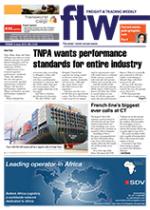The SA ostrich farming
industry is still surviving,
according to Piet Kleyn,
CEO of the SA Ostrich
Business Chamber
(SAOBC).
But more than a trifle
bruised, battered and
bewildered by a ban on the
export of fresh ostrich meat
imposed after the outbreak
of a bird f lu epidemic in
2011, he added.
And that was a big
thump to the industry’s
earnings. The loss of
70% of the global market
demand for fresh meat was
estimated at the time at
about R1.3 billion a year in
export revenue, and about
62% of the average ostrich
farmer’s income.
However, the f lu, and
that ban, are still in
place. And there’s either a
different virus out there, or
the old (avian H5N2) virus
has mutated somewhat,
because new strains have
been recorded in recent
farm outbreaks, according
to SAOCB.
So the ban is not likely
to be going soon. It was
originally laid down that
it wouldn’t be lifted until
farmers met the laid-down
hygiene and registration
requirements and the
country had been diseasefree
for three months. And
that hasn’t happened yet.
The problem is it’s nearendemic.
Not quite a local
bug, but one carried by
wild birds that migrate
in from Europe and Asia
every SA summer. “And
they share the same
ecosystem,” said Kleyn, “so
the virus gets transmitted
to the ostriches.”
And the only answer is
an ongoing immunisation
programme. But it takes
time while vital research
has to be conducted, and
producers are starving for
markets. “There’s no quick
fix,” said Kleyn.
There are certain
allowances made in the
health regulations. Meat
from a flu-free farm can
be exported. But not fresh.
Only if it goes through a
certified heat treatment.
However, the conditions
surrounding this allowance
are so bureaucratically
complicated that the small
sums it could earn make
it hardly worthwhile,
according to Kleyn.
The SAOCB therefore
targeted developing the
local market for virus-free
ostrich meat.
“The companies did a
lot of marketing of the
product locally,” said
Kleyn, “and the market has
grown quickly in the last 18
months.
“It takes time, though, to
fully establish a product.”
It does though have that
claim to fat-free meat so
beloved of the advertising
agencies. “So the ‘Healthy,
Fat-Free Food’ product
image promotion is aimed
at a niche-market,”
Kleyn added.
The buoyant health of
the leather and feather
marketplace also
somewhat makes up
part of the loss.
“They’re doing very
nicely,” Kleyn said,
“and still keeping
them (the
producers)
solvent in the
export industry.”
But a loss of over a
billion rand a year has to
be hurting.
INSERT
No head in the
sand... The loss
of 70% of the global
market demand
for fresh meat was
estimated at the time
at about R1.3 billion
a year in export
revenue.

